
Transposable elements drive rapid phenotypic variation in Capsella rubella (PNAS)
How can a species with limited genetic variation rapidly adapt to new environments? This phenomenon is known as the genetic paradox of invasion. Here, Niu et al. studied the role of Transposable Elements (TEs) in Capsella rubella, focusing on flowering-time variation. By analyzing population genomics…
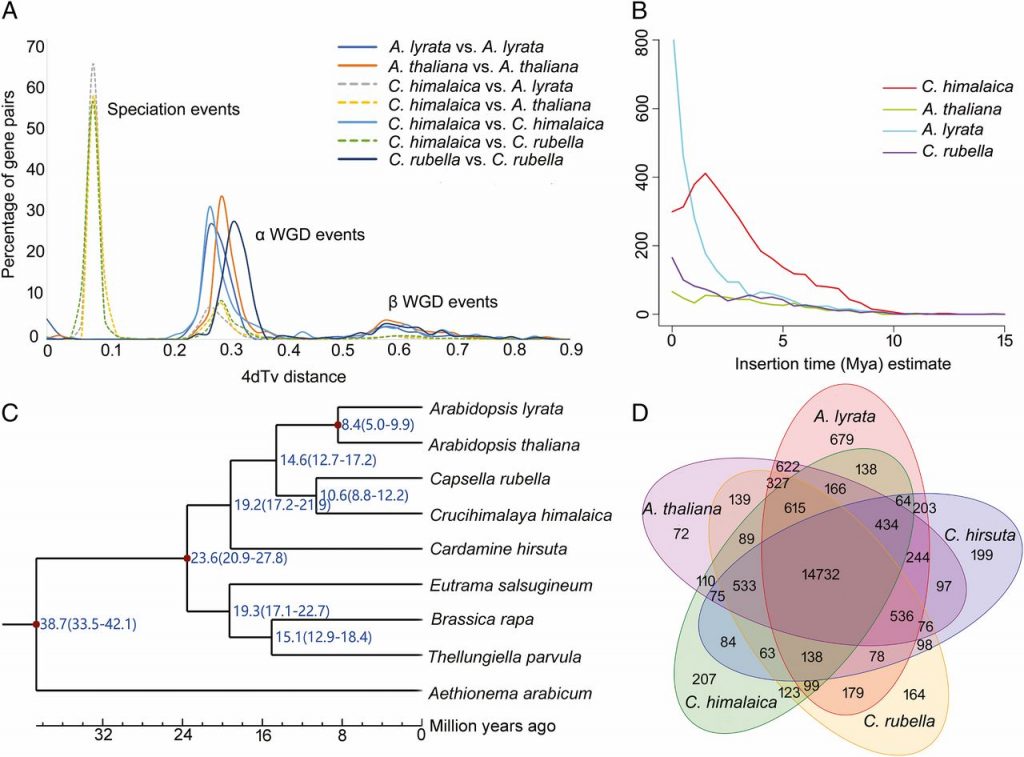
Dramatic changes in repeat element content and gene family sizes underlie the high-altitude adaptation of rock-cress (PNAS)
The ability to grow on the ‘roof of the world’ - the Qinghai-Tibet Plateau, makes Crucihimalaya himalaica (Rock-cress) an important model for studying adaptive evolution. A draft genome sequence of C. himalaica reported by Zhang et al. now provides clues to its speciation and ecological adaptation.…
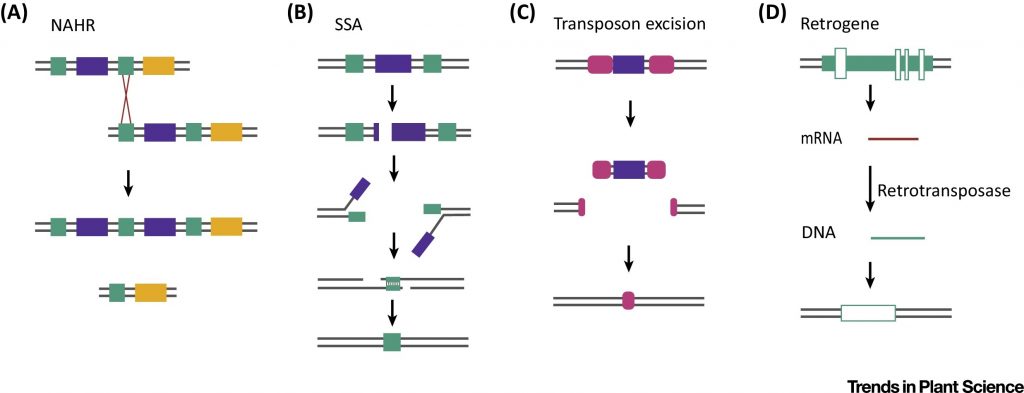
Review: Copy Number Variations shaping plant domestication (Trends Plant Sci)
Human-associated plant domestication is a co-evolutionary process that began at least 12,000 years ago. However, the genetic variations underlying many domestication traits are still unknown. In this review, Lye and Purugganan discuss how copy number variations (CNVs) have played an important role in…

Control of proliferation in the haploid meristem by CLE peptide signaling in Marchantia polymorpha (PLOS Genetics)
The peptide/hormones CLE (CLAVATA3/EMBRYO SURROUNDING REGION-related) and their receptors are a fascinating cell signal system that regulates meristems activity in angiosperms and is crucial for the establishment of 3D forms. How this system works in bryophytes is very relevant to understand its evolution…
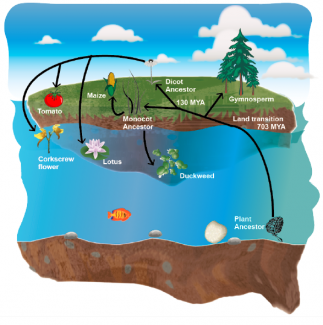
Convergent gene loss in aquatic plants predicts new components of plant immunity and drought response (bioRxiv)
Plants transitioned from water to land around 450 Million years ago. Since their emergence onto land, there have been at least a few reversion events to aquatic environments (e.g., duckweed, humped bladderwort). These big evolutionary events imply adaptation to completely different kinds of biotic and…
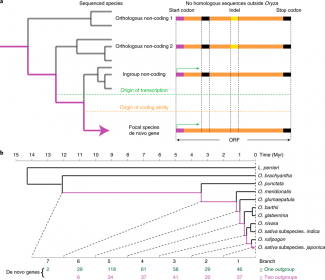
Rapid evolution of protein diversity by de novo origination in Oryza (Nature Ecol Evol)
The de-novo origin of new protein-coding genes from non-coding regions of plant genomes is a contributor to protein diversity, although it has been difficult to quantify to what extent this process occurs. High quality reference genome maps, deep transcriptome and targeted proteome sequencing are requisite…
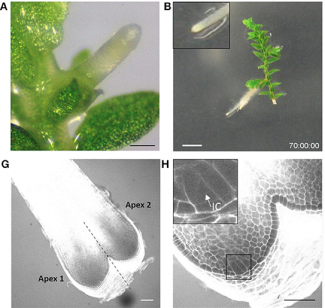
Root branching is not induced by auxins in Selaginella moellendorffii (Front Plant Sci)
Auxin is crucial for root development across angiosperms. All the auxin signal transduction pathway components are conserved in land plants, but their role is still not completely clear in early diverged lineages. Here, Fang et al. present a comprehensive analysis of exogenous auxin addition and polar…
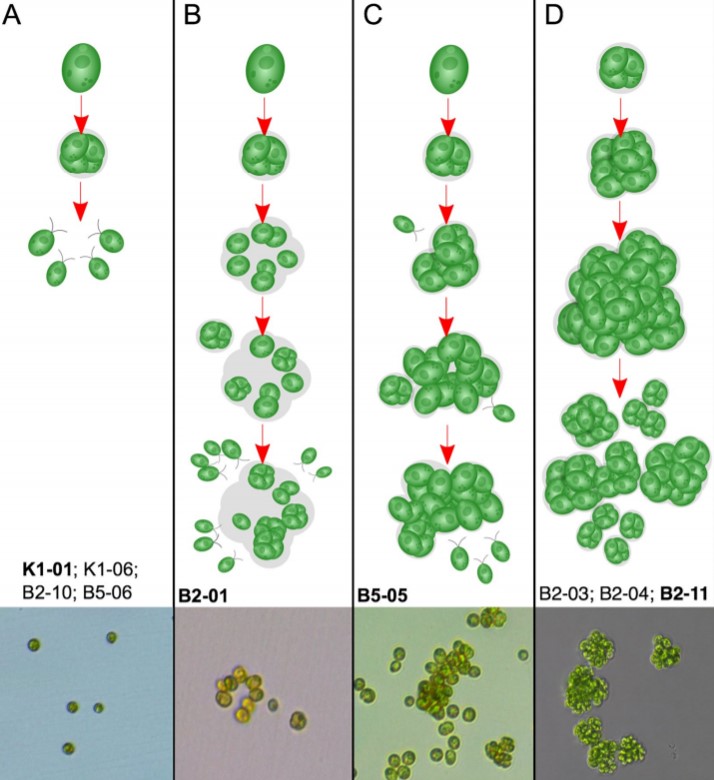
De novo origins of multicellularity in response to predation (Sci Reports)
Multicellularity has evolved independently many times in eukaryotes (e.g. land plants, fungi, animals). Predation is one driver that is hypothesised to lead to this evolution from unicellular ancestors. Here, using evolution experiments, Herron et al. demonstrate that the unicellular green algae Chlamydomonas…
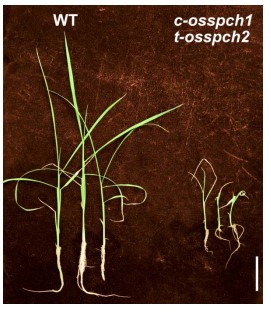
Multiple transcriptional factors control stomata development in rice (New Phytol) ($)
In the model plant Arabidopsis, stomatal development occurs in a scattered pattern with that avoids direct contact between them. In rice and other monocots, the stomata are distributed in a uniformly oriented manner. Such unique patterning and morphology of stomata intrigued Wu et al. to examine if the…

